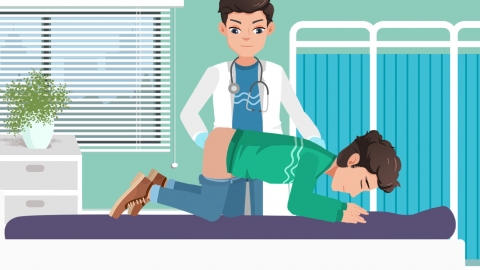There is a small flesh-colored bump around the anus, causing no pain or itching.
Generally, the main causes of painless and non-itchy small anal skin tags or lumps include prolonged sitting or standing, constipation, external hemorrhoids, rectal polyps, and rectal prolapse. If this symptom occurs, it is recommended to seek timely consultation at a regular hospital to determine the exact cause. Detailed explanations are as follows:
1. Prolonged Sitting or Standing
Long-term sitting or standing can hinder blood circulation in the anal area, causing slight dilation and accumulation of local venous plexuses, which may gradually form small lumps. In daily life, it is important to get up and move around periodically. After sitting or standing for about an hour, walking for 5–10 minutes appropriately can help promote blood circulation around the anus.

2. Constipation
Long-term constipation often requires excessive straining during bowel movements, which compresses and dilates the venous plexus in the anal area, eventually forming small lumps. Dietary adjustments are necessary, including increased consumption of fiber-rich foods such as celery, spinach, and dragon fruit to increase stool bulk and promote bowel movements. Additionally, maintaining a daily water intake of 1500–2000 milliliters helps soften stools and reduces straining during defecation.
3. External Hemorrhoids
Varicose veins or connective tissue hyperplasia at the anal margin can lead to external hemorrhoids. In the early stages, these often manifest as painless and non-itchy small lumps. Under a doctor's guidance, medications such as compound fucoidan cream, Gangtai ointment, and Ma Yinglong Musk Hemorrhoid Cream can be used to relieve local discomfort.
4. Rectal Polyps
Rectal mucosal surface may develop raised lesions, and some polyps may protrude outside the anus during defecation, forming small lumps. Early stages often lack significant pain or itching. Once detected, timely medical consultation is necessary. Smaller polyps can be removed via endoscopic polypectomy under medical supervision. Larger polyps may require endoscopic mucosal resection for removal and subsequent pathological examination to prevent disease progression.
5. Rectal Prolapse
Part or all layers of the rectal wall may shift downward. In mild cases, rectal mucosa protrudes outside the anus, presenting as painless and non-itchy small lumps. In severe cases of prolapse, rectal suspension and fixation surgery are required to anchor the rectum to surrounding tissues, alleviating the prolapse condition.
In daily life, maintaining anal hygiene and dryness is important. Choose loose and breathable underwear. Develop regular bowel habits and avoid excessive straining during bowel movements. Maintain a balanced diet, reducing intake of spicy and irritating foods. Engage in appropriate physical activity to enhance intestinal motility and blood circulation, thus maintaining anal health.





